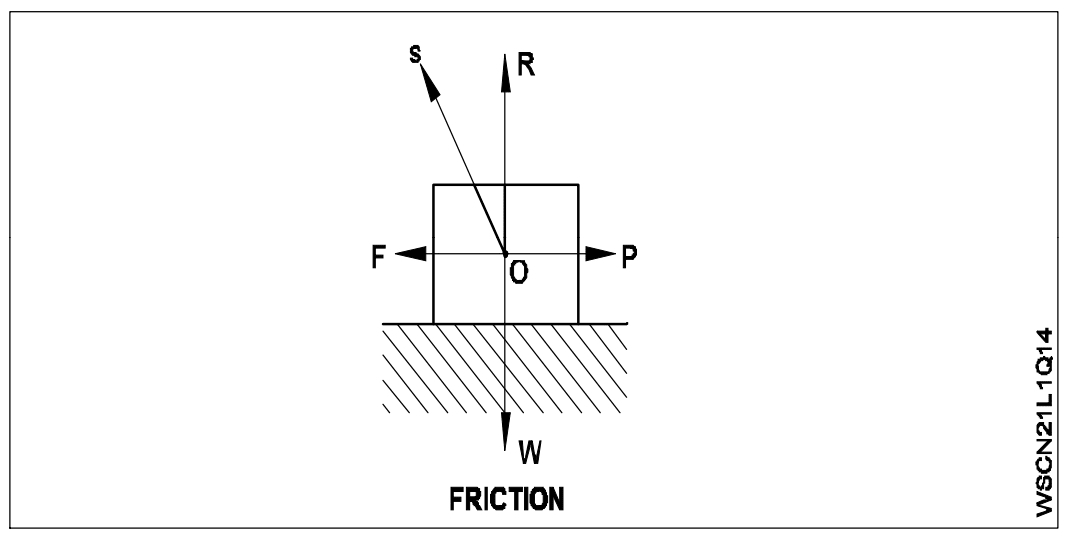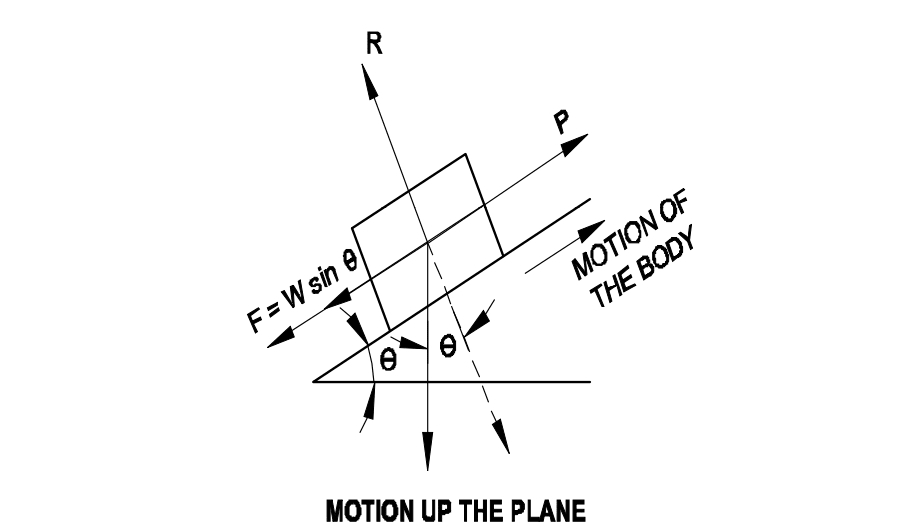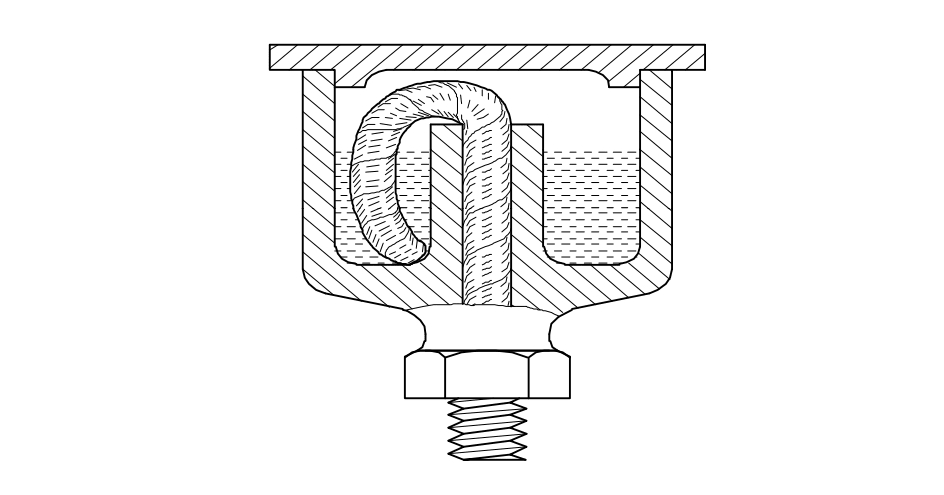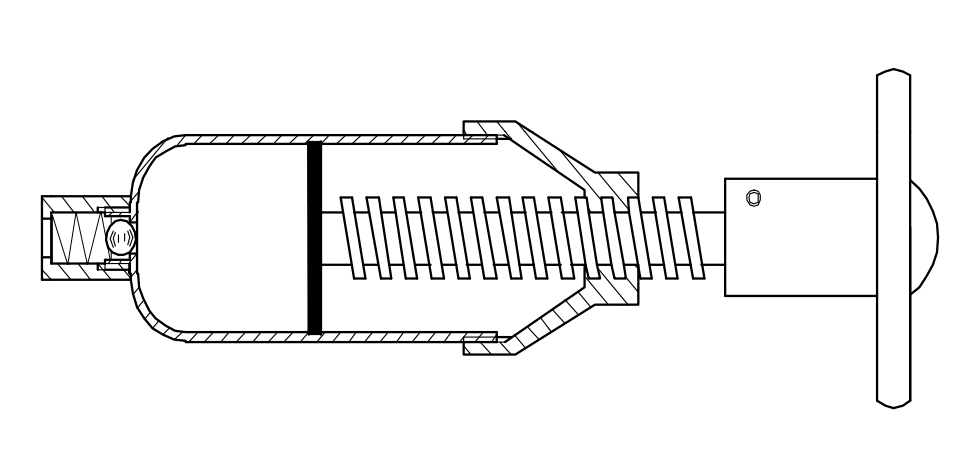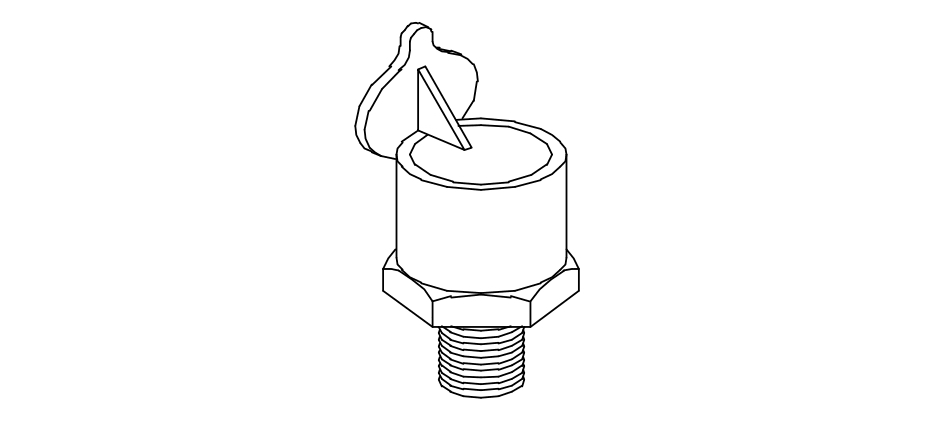Friction
Workshop Calculation and Science, Module-1
Friction
⭕️ Show all Answers
Q1: Which is the law of friction?
- Frictional force is independent of the area and shape of the contacting surfaces.
- Frictional force is inversely proportional to the normal reaction.
- Frictional force acts in the same direction as motion.
- Frictional force is not dependent on the nature of the contacting surfaces.
Q2: What is the direction of frictional force against a moving object?
- Inclined to the object.
- Opposite to the direction of motion.
- Parallel to the object.
- Perpendicular to the object.
Q3: Which force is directly proportional to the normal reaction between contacting surfaces?
- Pulling force.
- Pushing force.
- Frictional force.
- Allied force.
Q4: Which one of the following acts between wheels and roads that enables vehicles to move?
- Friction.
- Corrosion.
- Erosion.
- Motion.
Q5: Which is an example of useful friction?
- Rings in the cylinder.
- Crankshaft bearings.
- Wheel hub bearings.
- Brake shoe lining.
Q6: Which is an example of wasteful friction?
- Rear axle gear.
- Tyres on the floor.
- Brake shoe lining.
- Clutch lining.
Q7: On what does frictional force depend?
- Type of metals.
- Contact surfaces.
- Quantity of contacting metals.
- Quality of metals.
Q8: How is the coefficient of friction expressed?
- It is expressed as the ratio of force and area.
- It is the ratio between frictional force and normal reaction.
- It is the ratio between normal reaction and the mass of the object.
- It is expressed as the ratio of weight and normal reaction.
Q9: What is the formula to find the coefficient of friction?
- \(\mu = F \times W\)
- \(\mu = \frac{F}{W}\)
- \(\mu = \frac{R}{W}\)
- \(\mu = \frac{W}{F}\)
Q10: Which symbol is used to denote the coefficient of friction?
- \(\alpha\) (Alpha)
- \(\mu\) (Mu)
- \(\beta\) (Beta)
- \(\gamma\) (Gamma)
Q11: What kind of friction occurs if two objects are in contact at rest?
- Sliding friction.
- Rolling friction.
- Static friction.
- Angular friction.
Q12: Which is the correct statement?
- Limiting friction is equal to sliding friction.
- Rolling friction is more than sliding friction.
- Sliding friction is always less than limiting friction.
- Limiting friction is always less than sliding friction.
Q13: What is the formula to find the force if the object just moves up the plane?
- \(\frac{W\left(\sin \theta - \phi\right)}{\cos \phi}\)
- \(\frac{W\left(\sin \theta + \phi\right)}{\cos \phi}\)
- \(\frac{W\left(\sin \theta + \phi\right)}{\sin \phi}\)
- \(\frac{W\left(\cos \theta + \phi\right)}{\cos \phi}\)
Q14: Which angle is called the angle of friction?
- Angle – FOS
- Angle – ROS
- Angle – POS
- Angle – ROF
Q15: What is the coefficient of friction if the angle of friction is \(\theta \)?
- \(\sin \theta\)
- \(\cos \theta\)
- \(\tan \theta\)
- \(\cot \theta\)
Q16: What denotes the letter 'R' in the given figure?
- Force
- Resistance
- Load
- Normal reaction
Q17: What is the purpose of a lubricant?
- To increase the pressure
- To increase friction
- To reduce friction
- To reduce pressure
Q18: What type of lubricant is used in wick feed lubrication system?
- Lub-oil
- Grease
- Coolant
- Cutting oil
Q19: Which lubrication system is provided with a ring oiler to splash lub-oil continuously around the parts?
- Gravity feed system
- Pressure feed system
- Splash feed system
- Force feed system
Q20: Which one is the three types of lubrication system in general use?
- Force feed system, speed feed system, frictional feed system
- Velocity feed system, Speed feed system, Frictional feed system
- Gravity feed system, force feed system, splash feed system
- Splash feed system, Frictional force system, Speed feed system
Q21: Which lubrication system employs oil holes in the machines?
- Gravity feed system
- Force feed system
- Splash feed system
- Velocity feed system
Q22: What is the name of the lubrication system?
- Oil cup
- Wick feed
- Manual screw down
- Ring oiling
Q23: Which is used to reduce the friction in machine parts?
- Kerosine
- Petrol
- Water
- Lubricants
Q24: Which is the main purpose of using the lubricant oil in engine moving parts?
- To increase the efficiency
- To reduce friction
- To improve carrying capacity
- To improve the durability
Q25: Which is the correct statement?
- Lubricants acts to prevent corrosion
- Lubricants acts as a seal
- Lubricants acts as a fuel
- Lubricants acts as a filter
Q26: What causes the efficiency of a machine by maintaining the lubrication?
- Increases
- Decreases
- Remains same
- Does not affected
Q27: What is the name of the instrument used for lubrication?
- Oil-can
- Automatic hydraulic- Type pressure gun
- T-handle pressure gun
- Pressure grease gun
Q28: Which principle of lubrication can be employed?
- Pressure feed system
- Splash feed system
- Gravity feed system
- Force feed system
Q29: Which way the coolant acts as a lubricant?
- To carrry away dust
- To carry away the heat
- To carry away mositure
- To carry away dryness
Q30: What is the force required to move a body of mass 1000 kg if the co-efficient of friction is 0.4 (assume 1kg = 10 N)?
- 4000 N
- 400 N
- 40 N
- 4 N
Q31: What is the co-efficient of friction if a force of 30 N is required to move a body of mass 35 kg (Assume 1kg=10N)?
- 8.57
- 0.082
- 0.0857
- 0.0085
Q32: What is weight of an object could be moved by a force of 30 kg if co-efficient of friction is 0.0125?
- 80 kg
- 2430 kg
- 72000 kg
- 2400 kg
Q33: What is the angle of inclination if a weight of 150 kg is in equilibrium and the value of \(\mu\) is 0.5773?
- \(30^\circ\)
- \(45^\circ\)
- \(60^\circ\)
- \(90^\circ\)
Q34: How much force is required to just slide a 20 kg object lying on a horizontal table if the \(\mu\) is 0.2?
- 2 kg
- 3 kg
- 4 kg
- 5 kg
Q35: What is the force required to move a 20 kg object with a co-efficient of friction is 0.24?
- 4.8 kg
- 0.48 kg
- 0.048 kg
- 0.0048 kg
Q36: What is co-efficient of friction for pulling a load of 400 kg by a force of 40 kg?
- 0.01
- 0.2
- 0.1
- 0.02
Q37: How much will be the co-efficient of friction for moving a body of mass 80 kg by a force of 40 kg on a horizontal surface?
- 0.05
- 0.5
- 0.65
- 0.45
Q38: How much will be the weight of a body which will be moved by a horizontal force of 50 kg against a frictional resistance of 0.25?
- 150 kg
- 200 kg
- 250 kg
- 300 kg
Q39: What will be the approximate angle of inclination of an object if the co-efficient of friction \(\mu = 0.84\)?
- \(60^\circ\)
- \(45^\circ\)
- \(40^\circ\)
- \(30^\circ\)
Q40: What is the work done to move a body of mass 60 kg to a distance of 5 meters, if the co-efficient if friction between body and the plane is 0.2?
- 12 kg
- 60 kg
- 12 m-kg
- 60 m-kg
Q41: How much will be the work done in moving a 10 kg object resting on a horizontal plane through a distance of 10 meter (assume \(\mu = 0.15\))?
- 1.5 m-kg
- 15 m-kg
- 0.15 m-kg
- 150 m-kg
Q42: How much force is required to stop a vehicle of mass 1000 kg running on a road with coefficient of friction between the tyres and the road is 0.4?
- 3000 kg
- 450 kg
- 350 kg
- 400 kg
Found a mistake or mismatch in the question or answer? Let us know via email.
This post is licensed under CC BY 4.0 by the author.

